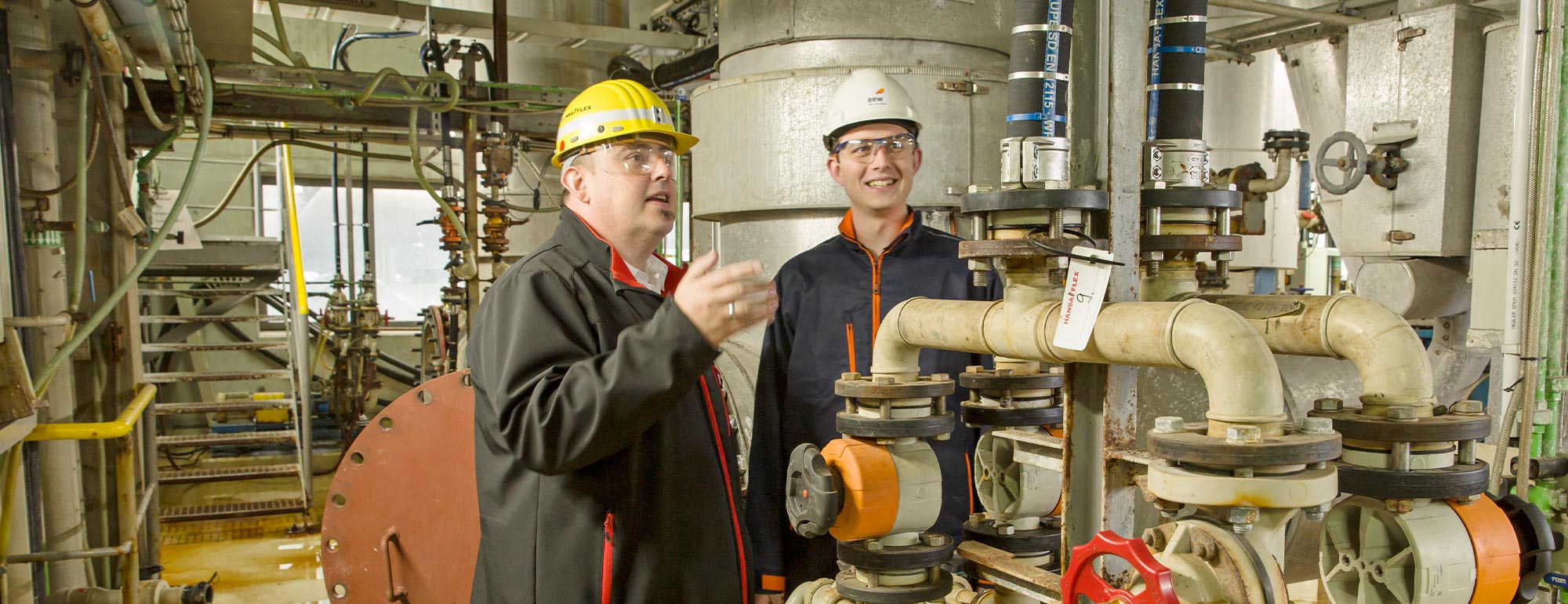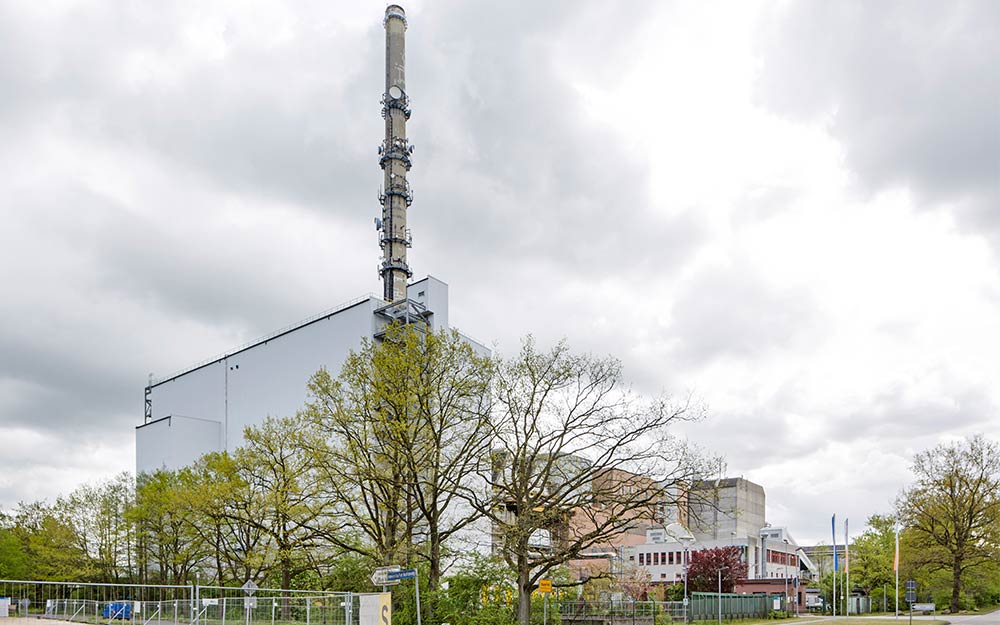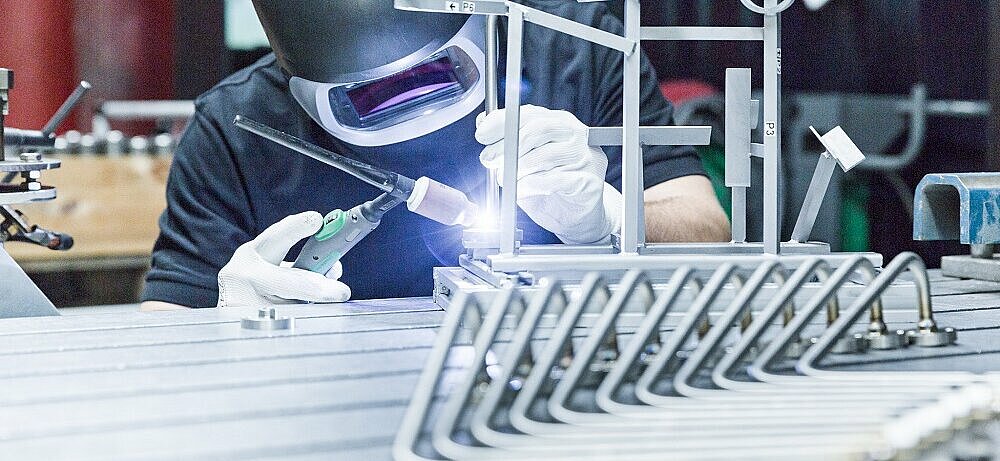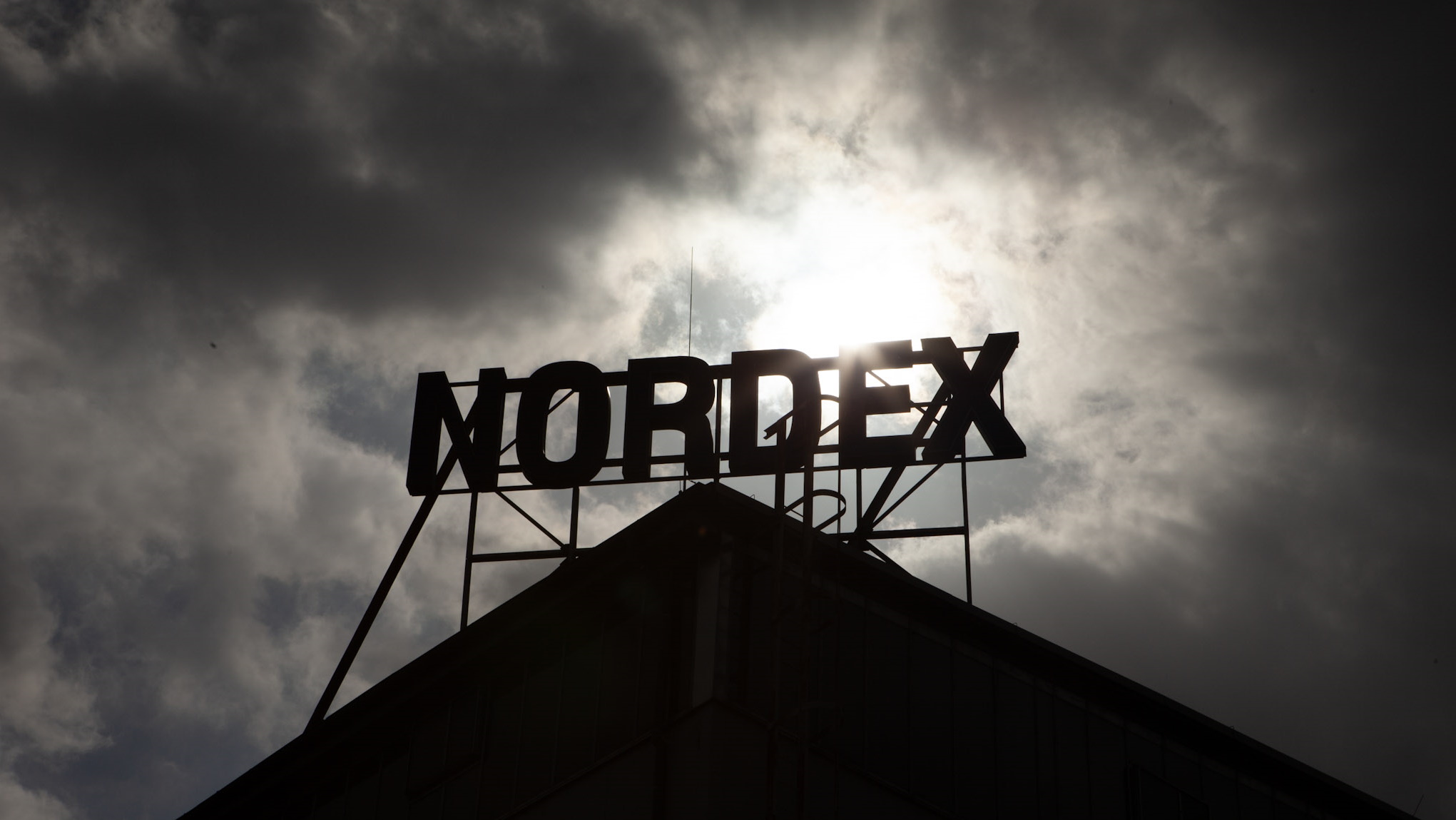Thermal utilisation
6:35 a.m. on the site of the Stapelfeld waste incineration plant: the first lorries have already brought their waste to the unloading hall, from where it is transported to the garbage bunker via a huge concrete chute. 140 vehicles arrive here every day. With a capacity of 6,000 tonnes the bunker offers sufficient space. “We need a stockpile in order to be able to guarantee supplies at weekends as well,” explains Riepold. The crane operator, who overlooks the mountains of waste from an odour-proof glass box, mixes the waste thoroughly with a five-ton grab. “The waste will only burn evenly and with little residue if the mixture is balanced,” says Riepold. The crane operator then drops the waste mix into one of the two feed hoppers, from where it enters the incinerator. “Here the temperature is more than 1,000 degrees Celsius all year round,” Riepold says. “At such high temperatures, the waste burns all by itself.” The heat from the waste incinerator generates around 63 tonnes of water vapour at 380 degrees Celsius per hour, which drives a turbine at a pressure of 26.5 bar. In this way 136,000 megawatt hours of electricity are generated annually – enough for 39,000 households.




